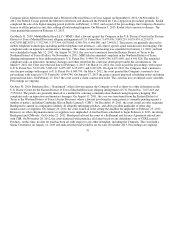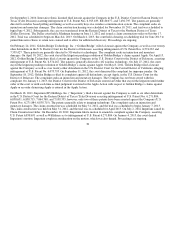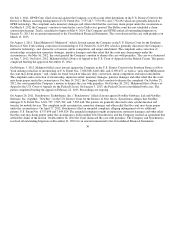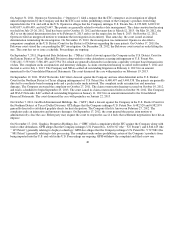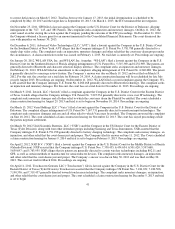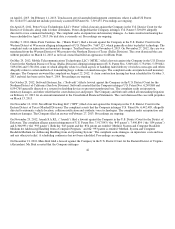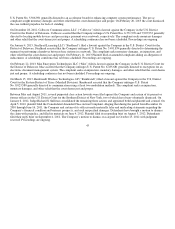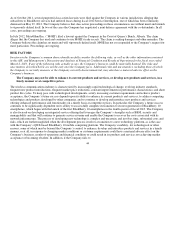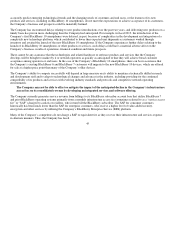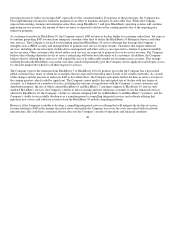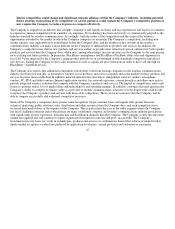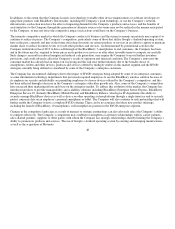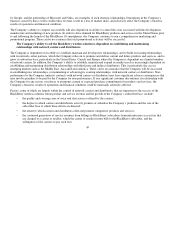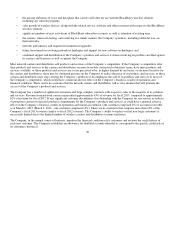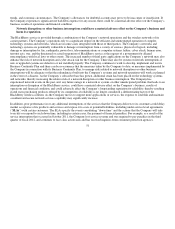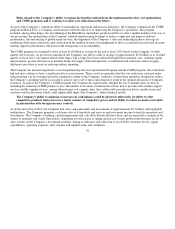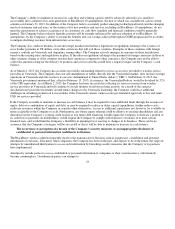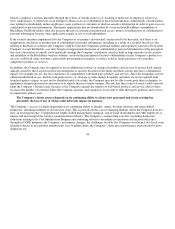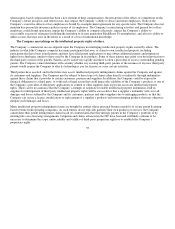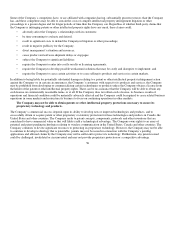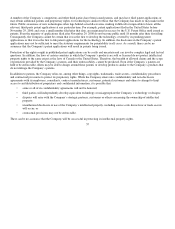Blackberry 2013 Annual Report Download - page 54
Download and view the complete annual report
Please find page 54 of the 2013 Blackberry annual report below. You can navigate through the pages in the report by either clicking on the pages listed below, or by using the keyword search tool below to find specific information within the annual report.
Intense competition, rapid change and significant strategic alliances within the Company’s industry, including potential
future strategic transactions by its competitors or carrier partners, could weaken the Company’s competitive position or
may require the Company to reduce its prices to compete effectively.
The Company is engaged in an industry that is highly competitive and rapidly evolving, and has experienced, and expects to continue
to experience, intense competition from a number of companies. No technology has been exclusively or commercially adopted as the
industry standard for wireless communication. Accordingly, both the nature of the competition and the scope of the business
opportunities afforded by the market in which the Company competes are uncertain. The Company’s competitors, including new
market entrants, may implement new technologies before the Company does, and the number of new entrants in the wireless
communications industry can make it more difficult for the Company to differentiate its products and services. In addition, the
Company’s competitors may deliver new products and services earlier, or provide more attractively-priced, enhanced or better quality
products and services than the Company does, which may, among other things, increase pressure on the Company to discount pricing
on its existing and future products. In particular, BlackBerry smartphones and BlackBerry PlayBook tablet sales and shipments in
fiscal 2013 were impacted by the Company’s aging product portfolio in an environment in which multiple competitors introduced
new devices, leading the Company to offer sales incentives as well as significant price reductions in order to drive sell-through for
BlackBerry 7 handheld devices.
The Company also expects that additional competition will develop, both from existing companies in the wireless communications
industry and from new entrants, as demand for wireless access products and services expands and as the market for these products and
services becomes more established. In addition, network infrastructure developers, independent software vendors, smartphone
vendors, PC, PDA and tablet vendors, Internet application vendors, key network operators, content providers and others may seek to
provide integrated wireless solutions that compete with the Company’s products and services. The impact of competition could result
in fewer customer orders, loss of market share and reduced gross and operating margins. In addition, customers that may question the
Company’s ability to compete or remain viable as a provider of mobile communications solutions over the longer term could decide
to replace the Company’s products and services with those of its competitors. There can be no assurance that the Company will be
able to compete successfully and withstand competitive pressures.
Some of the Company’s competitors have greater name recognition, larger customer bases and significantly greater financial,
technical, marketing, public relations, sales, distribution and other resources than the Company does, and such competitors have
increased their market share at the expense of the Company. This is particularly the case in the tablet segment where the Company
has faced challenges entering and in which there are many established computer and wireless communications industry participants
with significantly greater experience, infrastructure and distribution channels than the Company. The Company’s entry into the tablet
market has required and will continue to require significant investment to innovate and grow successfully. The Company’s
investments may not, however, result in technologies, products and services or combinations thereof that achieve or retain broad or
timely market acceptance or which are preferred by application developers, content providers and customers or consumers.
47


